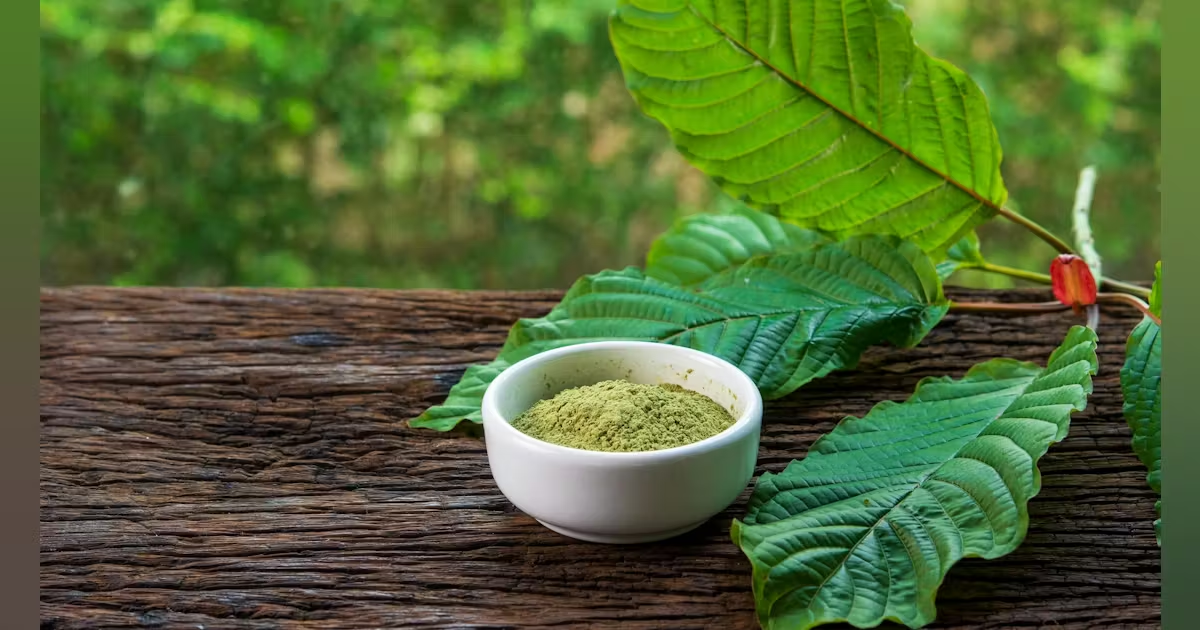Blog
Debunking Top 10 Myths on Third-Eye Kratom

The plant-sourced product, third-eye kratom, comes from the Mitragyna speciosa, which is a native species of Southeast Asian countries and is sold around the world for its rumored health-helping effects and mood elevation. It is often ingested as capsules, powder, or mixed with teas, or it can simply be given directly. To start with, though it has become the number one discovered substitute product, Third-Eye Kratom has myths and misconceptions that need to be demystified.
Third-eye kratom is a product of the Mitragyna speciosa tree, which takes its name from the crown-like white flower native to the tropical rain forests of Southeast Asia. It can be found in capsules, powder, and even tea forms. Several myths about the employment of medication exist. Let’s explore these for now.
Unlock Exclusive Deals — Join Our Wholesale Program Now!
Myth #1: Third-Eye Kratom is a hallucinogen
Of the many myths about Third-Eye Kratom is the belief that it contains hallucinogenic properties similar to drugs like LSD and psilocybin, which are known for the introspective effects experienced by the mind. Notably, it is not correct. Unlike all other mind-altering drugs, kratom does not contain those components that make a user experience visual or auditory hallucinations. The major mechanism through which it operates is mainly by opioid receptors alkaloids, including mitragynine and 7-hydroxy mitragynine in the brain.
- Unlike psychedelic kratom, third-eye Kratom does not have such substances.
- Its influence on mood is traditionally associated with communication between opiate receptors.
- It is the potency of Third-Eye Kratom that drives fear among consumers. When one takes this Kratom, the users do not hallucinate.
Myth #2: Third-Eye Kratom is addictive
The myth that the use of Kratom is comparable to opioids and that the person is becoming addicted is mainstream. While it does interact with receptors belonging to the opioid family, the question as to the extent of addictive potential is controversial among researchers. Although some customers are more inclined to form habitual dependence, similar to the case of using traditional opioids such as heroin and prescription painkillers, the point to be noted is that this dependence is not considered highly addictive.
- An element of doubt lies in the addiction potential of Third-Eye Kratom, as opinion specialists do not reach a single consensus.
- During long periods and with an excessive dosage, some users can develop physical dependence.
- It doesn’t produce dependency like one experiences with more addictive opioids like opioid analgesics or heroin.
Myth #3: Third-Eye Kratom is a legal high
The other delusion, though, is that the Third-Eye Kratom is an illegal high because its use is believed to be similar to recreational drug use. Although kratom is legal in many places around the globe, its legality status is different from one region to another and depends on the country in which it is being used. What is more, there indeed lies correctness in the observation that much emphasis on just the recreational use of kratom disregards its traditional and therapeutic uses. Though Kratom is a complex herb whose effects are not as typical as take-it-anytime to get an instant high, it’s more commonly used for its potential therapeutic benefits other than recreational use.
- Local authorities have different positions regarding kratom, both in the United States and abroad.
- The idea that this plant should be used for recreation needed to be recognized its medicinal use.
- While it is coveted for the alleged benefits of this treatment and not just recreation, it is still illegal.
Myth #4: Third-Eye Kratom is safe for everyone:
It is believed by many that Kratom is universal in its safety and understanding of everyone. Nevertheless, kratom is a unique compound that may produce wide differences in individual reactions. Some general safety aspects are related to the dosage, duration of use, the presence of personal medical conditions, and interactions with other medicines or different substances. While some might not experience significant benefits from the use of NBIs with side effects and adverse reactions, others may be susceptible to complications or certain side effects.
- Third-Eye Kratom safety is related to different parameters, such as the wellness of an individual and specific ways it’s used.
- Besides preexisting health conditions and drug interactions, the issue of safety is also raised.

Myth #5: Third-Eye Kratom has no side effects:
There is a misbelief among entities that Third-Eye Kratom is free from side effects at all. Because several users record positive results, some downsides of kratom use are not to be excluded. The symptoms that may result from such substances can include nausea, vomiting, dizziness, constipation, insufficient appetite, and, in rare cases, liver toxicity or respiratory depression. Similarly, it is important for individuals to know the possible consequences of misusing kratom and to administer kratom wisely.
Third-eyed Kratom consumption will have the following outcomes:
- One of the most severe side effects is nausea and vomiting. Other side effects include dizziness and constipation.
- These side effects have been reported, but they are rare and may result in liver or respiratory problems.
Myth #6: Third-Eye Kratom is a cure-all remedy
Third Eye enthusiasts may claim that it is a panacea that cures everything from simple pain to complex conditions. On the other hand, apart from the therapeutic benefits that kratom provides for particular individuals. It should not be seen as a cure-all. The implications of its utilization are challenged because of its complexity, and no definitive understanding of its side effects exists. Therefore, it should not be treated as an alternative to medical treatment and recommendation. Alongside this, kratom, being the only means of managing health concerns, can hinder or do away with people going to the medical center in time.
- Third-Eye Kratom is a miracle plant by some propounders or marketers.
- Unfortunately, its mechanism of action is still not very clear, like with other drugs, and may also be different for those who experience a different effect.
- Kratom may not be regarded as a replacement for professional therapy.
Myth #7: Third-Eye Kratom is regulated and standardized
Going against common perception, the Third-Eye brand of kratom is usually not under very strict regulation and standardization regulations. In many states where kratom is legal, it is common to sell it as an alternative dietary supplement or herbal product. Therefore, it may have an exemption from the tight regulations applicable to pharmaceutical products. Such lack of regulation could result in product quality variation, potency, and security that now require consumers to make sure to buy from a reputable source to exercise caution when taking kratom products.
- That level of tight control or standardization does not protect the third-eye kratom.
- There are many different forms of kratom, but the most common one is a dietary supplement or herbal product.
- Lack of regulation may cause disparities in product quality and safety.
Myth #8: Third-Eye Kratom is a natural alternative to prescription medication
Although a few individuals may choose Third-Eye Kratom over prescriptions to deal with diseases like chronic pain or anxiety. It is essential to agree that kratom is not a substitute for professional healthcare.
Regarding the production of kratom for different health purposes, research needs to improve its effectiveness while bearing in mind safety issues, especially in cases where legally prescribed drugs may be required. Also, one can face the risk of suddenly ceasing a prescription drug and switching to kratom in one go, regardless of a doctor’s supervision.
- Kratom is a natural prescription alternative.
- However, its efficacy and safety for different health problems have yet to be validated enough.
- Any break in prescription drugs and replacing them with kratom by now could be unsafe.
Myth #9: Third-Eye Kratom doesn’t interact with other substances
Contrary to the notion that Third-Eye Kratom negates the concurrent use of other medications, there is an interaction between them. Nevertheless, kratom, like many psychotropic agents, may cause undesired side effects when combined with medications, supplements, and other substances.
For instance, ingesting kratom in conjunction with drugs that affect the central nervous system. Depressants, such as alcohol and benzodiazepines, can increase the presence of respiratory depression or overdose. The understanding by people using kratom of the possible interactions.
- At the same time, Third-Eye Kratom may become a potential drug interaction with medicines, supplements, and other substances.
- Pharmacologically, kratom and substances that depress the nervous system can pose risks when they are mixed.
- The users should be aware and consult their doctor about how the medications can affect them.
Myth #10: Third-Eye Kratom is a miracle supplement
The most widely spread legend about the ‘Third-Eye’ kratom is that this is an all-healing supplement that cures a myriad of diseases and delivers unbelievably quick and tangible advantages. However, not everyone can feel the positive effects of kratom consumption, contrary to the favorable claims. Thus, it would be best to be doubtful and critical when thinking about it. Kratom is not a panacea. It acts differently in different people, and its effects may vary considerably. However, ensuring that such therapy has a track record is necessary since health and wellness are usually complex problems. Having realistic expectations and being open-minded about all medical conditions and problems is essential, as you must seek guidance from a healthcare professional.

- The often-appearing links between third-eye Kratom and a short-cut remedy have been so prominent that third-eye kratom has been branded as a magic pill by some users.
- This highly impacts users or does not have any specific effect on their experiences. People should be attentive to this and only be ready to accept some opinions presented on it.
- Delivering exclusively on kratom health issues may be disappointing and confining to the variety of health concerns.
Let’s Wrap Up!
The Third-Eye supplement is a substance that has a powerful way to fire people’s imagination for its possible health achievements. However, a lot of myths and misconceptions are related to it. The smashing of the mentioned myths leads us to the truth that the actual, subtly tomato view is the only right thing to allow is safe and responsible consumption. While kratom is desirable to many people, it’s not something to be used lightly. It needs to be given a lot of thought because the effects can differ from one person to another.
For people considering Third-Eye Kreatom use, educating themselves about its properties is essential. However, they can get third-eye kratom products from bedrock botanicals’ comprehensive range of products. Apart from that, it is good that you talk to a healthcare professional before using kratom in the context of wellness, especially for those who are already in some particular health state and who are taking other drugs.